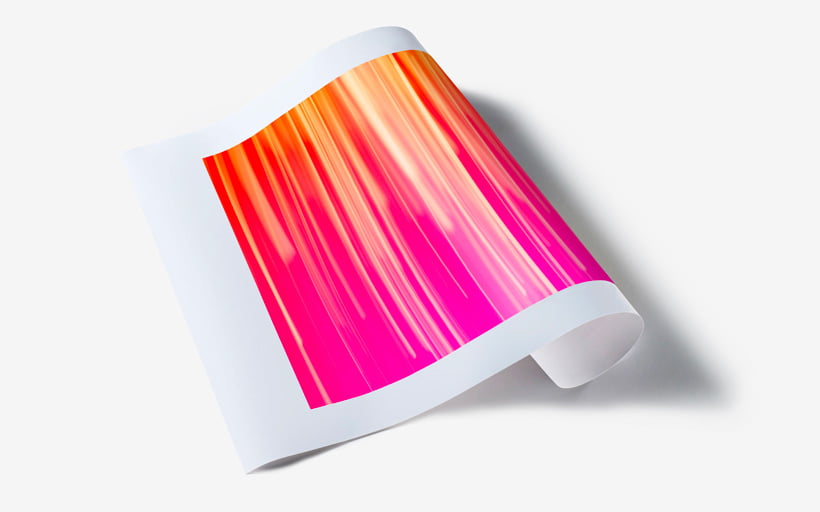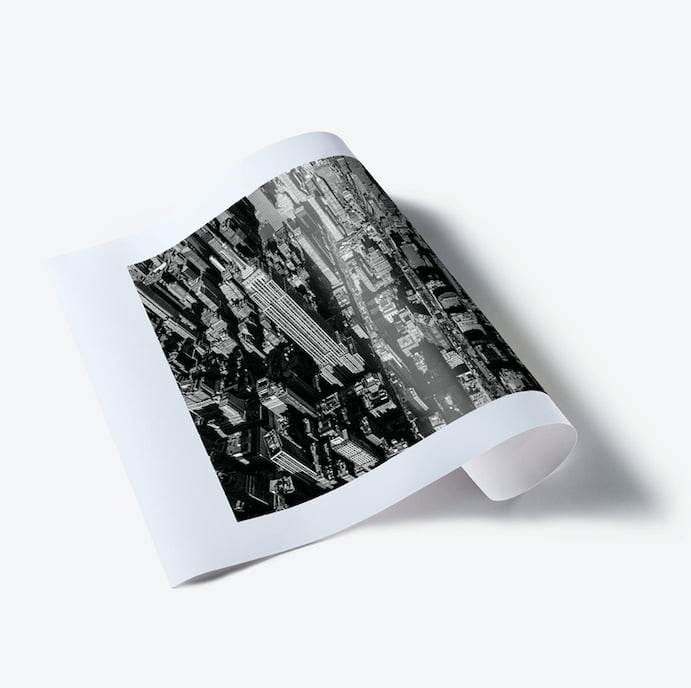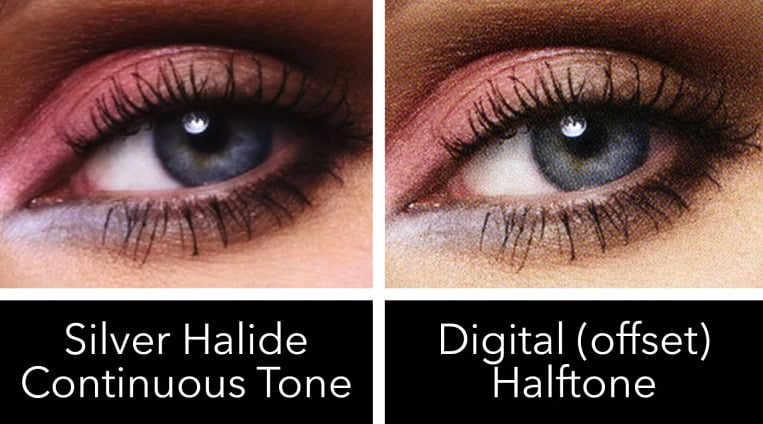What is silver halide? Understanding the silver halide printing process

Tags
Interested in joining the world's leading print on demand platform?
If you’re just dipping your toe into the world of print on demand, it’s highly likely that you’re also trying to get your head around the many different types of printing methods on offer. From screen printing and inkjet printing to dye-sublimation printing, the choices are endless.
Simply put, choosing the right print technology all hinges on the product you want to print on and the finish you want to achieve. In this blog post, we’ll be getting to grips with the silver halide printing process and discussing the advantages and disadvantages of silver halide photo prints. But first, let’s answer that all-important question: What is silver halide?
What is silver halide?
Silver halide is a chemical compound and has been used in photographic film and paper for hundreds of years. In fact, when it comes to producing high-quality photo prints, silver halide printing is the chef’s kiss of printing methods.
Also referred to as chromogenic prints, C-types, C-prints or C-type prints, silver halide prints are actually created by a chemical reaction. And while you won’t find us teaching science lessons any time soon, we do know a thing or two about this kind of chemistry…
Silver halide paper contains light-sensitive silver halide crystals and dye couplers suspended in layers of gelatin. When this paper (and the concoction inside it) is exposed to light, it triggers a chemical reaction, which then develops to form a full-colour image — all without a drop of ink in sight.
In a nutshell, silver halide prints are exposed using light instead of ink, digital files instead of film negatives and a printer instead of a darkroom.
Silver halide prints — the pros
Rather than laying down individual dots of colour — a printing method known as halftone — the silver halide printing process produces a smooth, continuous tone known as contone. Silver halide prints are also great for recreating natural skin tones, shadows and highlights, and deep blacks and brilliant whites. These photorealistic elements make silver halide prints a popular choice for photographers — particularly portrait photographers.
Another benefit of the silver halide printing process is the longevity of the prints that it produces. Since the dye is embedded within the paper itself instead of deposited on top of it, the print is less likely to smudge and is scratch and water resistant. Even more impressive is that silver halide prints can typically withstand deterioration caused by light exposure for approximately 60 years, giving them an archival quality.
Generally speaking, silver halide prints are cheaper than Giclée (aka inkjet) prints and can be produced more quickly. If you’re looking to print your photos as a one-off then it really comes down to personal preference, but if you’re planning to sell your photography as print on demand merchandise then silver halide printing is the more cost-effective and time-efficient option.
Silver halide prints — the cons
Speaking of Giclée prints, while they might be slightly more expensive and take longer to produce, they do have some advantages over silver halide prints. Giclée printing can be used for both artwork and photography, however many professionals prefer this technique for fine art prints. This is because Giclée printing paper lasts even longer than silver halide photo paper (between 100 and 200 years, to be exact), has a thicker feel and produces a sharper finish. So if you’re an artist, illustrator or designer and you’re after a long-lasting, museum-quality photo paper, a Giclée print may be your best bet.

And that’s not all. Due to their gelatin content, most silver halide prints aren’t vegan friendly, so we’d recommend using an alternative photo paper if sustainability is important to you or your brand. And although silver halide prints don’t contain any environmentally damaging solvent inks, they do produce chemical waste and therefore aren’t necessarily considered more eco friendly than ink-based digital printing methods.
To sum up…
Ok, so now that we’ve established what silver halide is and unpacked the silver halide printing process, let’s summarise the pros and cons of silver halide prints:
Pros:
- Continuous tone gives a super-smooth finish — ideal for portrait photographers
- Resistant to smudges, scratches and water damage
- Archival-quality paper lasts for up to 60 years
- Low wholesale cost and fast manufacturing time
Cons:
- Doesn’t provide as sharp a finish as Giclée prints — not the best option for artists
- Paper isn’t as thick as fine art paper and doesn’t last as long
- Not vegan friendly
Our silver halide colour papers are designed to produce professional photo prints. With a brilliant white base that offers a continuous tone and excellent image stability, they allow for incredible depth and beautifully vibrant colours and are available to order in a variety of finishes.
Sold on the silver halide printing process? Our C-type prints are available to order in lustre, gloss and metallic finishes.





